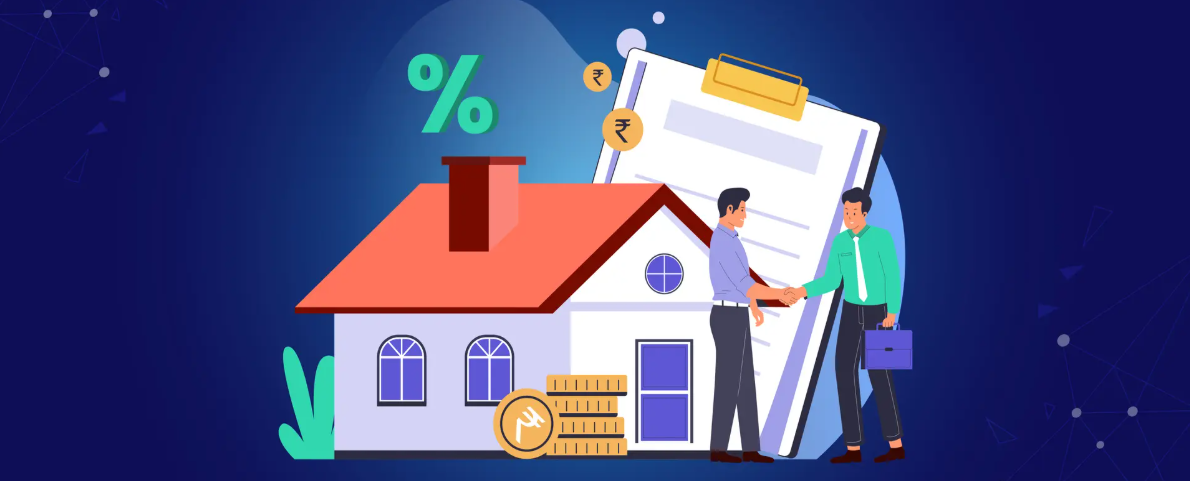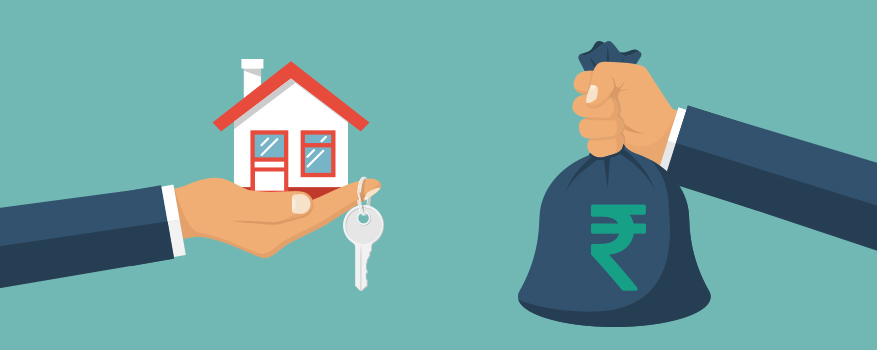Contents
- 1. Introduction
- 2. When Should You Buy a House? – Best Time to Invest in Real Estate 2025
- 3. TPros and Cons of Buying a Home or Villa – Real Estate Investment Benefits & Risks
- 4. How to Pay for Your New Home – Home Loan & EMI Explained
- 5. Important Papers & Proofs – Property Documents Required for Home Loan
- 6. Focus Areas & Due Diligence – Checklist for Safe Property Purchase
- 7. How & When to Make an Offer – Negotiation in Property Buying
- 8. After Loan Approval – Home Loan Disbursement & Property Registration
- 9. Things to Avoid
1. Introduction
Buying a house or villa is one of the biggest financial decisions in life. It requires long-term commitments, legal clarity, and careful home buying finance planning.
The real estate and home loan markets in India 2025 are dynamic, regulated, and influenced by interest rates, property prices, and government policies.
This guide explains:
- When & why to buy a home
- How to finance it through loans/EMIs
- What documents & proofs are required
- Due diligence checklist for safe buying
- Negotiation & registration steps
By following this, you can avoid financial mistakes and legal risks– by Search Abode
2. When Should You Buy a House? – Best Time to Invest in Real Estate 2025
Market & Economic Indicators for Property Buying
- Home loan interest rates: Easier to buy when rates are low.
- Real estate cycles: Prices fluctuate—track supply vs demand.
- Government schemes: Look for housing subsidies & tax benefits.
Personal Finance Readiness Before Taking a Home Loan
- Stable income & job security
- Credit score above 750
- Savings for down payment, closing costs & emergency fund
Lifestyle & Long-Term Goals in Home Ownership
- Long-term residence plan in the city/area
- Willingness to bear maintenance, taxes, repairs
3. TPros and Cons of Buying a Home or Villa – Real Estate Investment Benefits & Risks
Advantages of Buying Property with Home Loan
- Appreciation: Property value increases over time.
- Forced savings: EMI builds equity.
- Stability: No landlord hassles.
- Tax benefits: Deduction on loan principal & interest.
- Freedom: Full control & customization.
Disadvantages & Risks of House Buying Finance
- Hard to sell quickly (illiquid asset)
- High upfront & hidden costs
- Maintenance & property tax burden
- Debt risk from over-leveraging

4. How to Pay for Your New Home – Home Loan & EMI Explained
Understanding EMIs, interest rates, and property documents is the backbone of home buying finance. Whether you choose a fixed or floating loan, careful planning ensures you avoid future debt traps.
4.1 Types of Home Loans & Mortgages in India
- Regular home loan
- Government housing loan schemes
- Self-construction or plot loan
- Renovation loan
- Bridge loan (short-term)
4.2 Who Can Apply for a Home Loan – Credit Score & Eligibility
- Good CIBIL/Experian score (750+)
- Healthy debt-to-income ratio
- Stable job history & age factors
4.3 How Much Money You Can Borrow – Home Loan Eligibility
- Loan-to-Value (LTV): 70–90%
- Depends on income, dependents & existing debts
- Maintain 10–30% down payment from savings
4.4 How to Calculate EMI for Housing Loan
Formula:
EMI = [P × r × (1 + r)^n] / [(1 + r)^n – 1]
Where:
- P = Loan amount
- r = Interest rate per month
- n = Tenure in months
Use EMI calculators online for quick results.
4.5 Fixed vs Floating Home Loan Interest Rates
- Fixed Rate: Stable EMI, predictable
- Floating Rate: Linked to RBI/MCLR, fluctuates
- Hybrid/Convertible: Mix of both
4.6 Prepayment & Foreclosure of Home Loan EMIs
- Pay early to reduce interest
- Partial prepayments lower tenure
- Check for foreclosure penalties
5. Important Papers & Proofs – Property Documents Required for Home Loan
5.1 Proof of Identity (KYC)
- Aadhaar, Passport, Voter ID, Driving License
5.2 Proof of Income/Employment
- Salary slips (3–6 months)
- ITR (2–3 years)
- Bank statements
- Appointment/contract letter
5.3 Proof of Assets & Bank Statements
- FDs, mutual funds, investments
- Other property ownership proofs
- Savings history
5.4 Property Documents
- Sale deed / title deed
- Encumbrance certificate
- Previous conveyance deeds
- Approved site plan & layout
- Building approval & specifications
5.5 NOC & Tax Receipts
- Property tax receipts
- NOC from housing society/authority
- Occupancy certificate
- Utility clearance (water, electricity)
Always cross-check with your bank’s checklist.
6. Focus Areas & Due Diligence – Checklist for Safe Property Purchase
6.1 Legal Title & Search
- Verify ownership chain
- Check for lawsuits, liens, mortgages
6.2 RERA & Local Approvals
- Ensure RERA registration (India-specific)
- Zoning & land use checks
6.3 Construction Quality
- Soil & structural reports
- Compare promised vs delivered amenities
6.4 Hidden Costs
- Stamp duty, registration fees
- Maintenance deposits, society charges
6.5 Neighborhood & Infrastructure
- Connectivity, metro, roads
- Schools, hospitals, markets nearby
- Upcoming development projects
6.6 Builder Reputation
- Track record of delivery
- Financial stability & RERA complaints
7. How & When to Make an Offer – Negotiation in Property Buying
7.1 Making an Offer
- Quote below max budget
- Research comparable property prices
- Negotiate for free add-ons (parking, interiors)
7.2 Timing the Market
- Buyer’s market = more negotiation power
- Off-season deals, festive offers
- Falling interest rate cycles
7.3 Booking & Escrow
- Booking amount: 5–10%
- Escrow account for security
- Clear refund/forfeiture terms
8. After Loan Approval – Home Loan Disbursement & Property Registration
- Bank disburses funds (in stages for under-construction)
- Pay stamp duty & register property
- Collect possession letter & occupancy certificate
- Transfer utilities in your name
- Move in after final inspection
9. Things to Avoid
- Over-borrowing beyond repayment capacity
- Ignoring hidden costs
- Skipping legal verification
- Emotional buying without due diligence
- Choosing wrong interest type (fixed/floating)
- Not maintaining emergency buffer
Conclusion: Home Buying Finance Checklist
- Possession & move-in → Switch utilities, do inspection
- Choose property type → House, villa, apartment, plot
- Check affordability → Use online calculators
- Loan application → Apply with multiple banks
- Due diligence → Legal, technical, builder history
- Negotiate & finalize → Price, payment terms, inclusions
- Loan approval & disbursement → Verify sanction terms
- Registration & stamp duty → Complete legal formalities
FAQFrequently Asked Questions (FAQs) About Home Buying Finance
Ans: Most banks prefer a CIBIL score of 750 or above. A higher score increases your chances of getting loan approval at lower interest rates.
Ans: Typically, banks finance 70–90% of the property value. The buyer needs to arrange 10–30% as a down payment plus registration charges, stamp duty, and other costs.
Ans: EMI = [P × r × (1 + r)^n] / [(1 + r)^n – 1]
Or simply use an online EMI calculator for quick results.
Ans: The main documents include:
1.Identity proof (Aadhaar, Passport, PAN, Voter ID)
2.Income proof (Salary slips, ITR, Bank statements)
3.Property papers (Sale deed, Encumbrance 4.certificate, Approved plan)
5.NOC & property tax receipts
Ans: 1.Fixed rate: EMI remains constant throughout the loan tenure.
2.Floating rate: EMI changes as per RBI repo rate/MCLR fluctuations.
3.Hybrid rate: Mix of both fixed & floating.
Ans: It depends on your financial situation, property price trends, and interest rates. Buying offers long-term security and appreciation, while renting provides flexibility and lower short-term costs.

